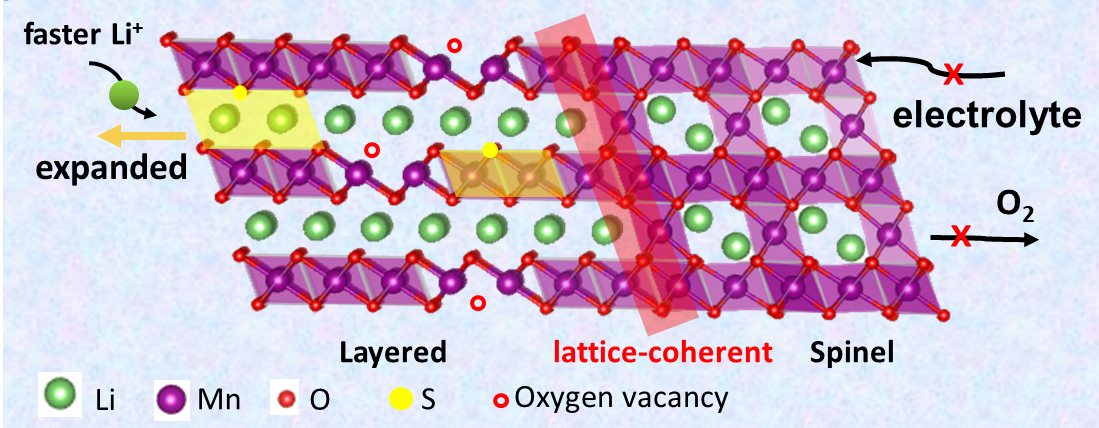
In recent years, lithium ion batteries have been widely used in many fields. Compared with traditional lithium ion battery cathode materials, more lithium ions in lithium rich manganese based cathode materials of unit mass participate in energy storage. However, in the process of battery reaction, stress accumulation and lattice oxygen loss will cause some microcracks in lithium rich manganese based materials. The migration of transition metal ions will lead to phase transition of materials and other harmful side reactions, making the actual battery performance less than ideal.
How to effectively avoid these adverse effects during the battery cycle is the key to improve the material performance and make the material truly practical in the future.
According to a paper recently published in Chemical Engineering Journal, researchers from Hefei Institutes of Physical Science of Chinese Academy of Sciences successfully prepared a high-performance cathode material for lithium rich manganese based lithium ion batteries.
The team led by Prof. ZHAO Bangchuan carried out sulfur doping and in-situ growth of coherent spinel phase synchronously on the surface of lithium rich manganese based materials combining with oxygen vacancy optimization strategies.
The epitaxial spinel coating layer cohered with the inner layer phase can effectively avoid the direct contact between the electrolyte and the active material during the battery reaction and provide a three-dimensional channel for the diffusion of lithium ions.
In addition, S doping can expand the crystal plane spacing of surface layered phase materials, reduce the energy barrier of charge transfer in the materials, and the chemical bond formed between sulfur and transition metal elements can also adjust the irreversible anion redox and stabilize the structure of materials.
At the same time, the oxygen vacancy induced by sulfur doping can also inhibit the loss of surface active oxygen and protect the integrity of the bulk phase structure.
With the multifunctional modification of the surface layer, this lithium rich manganese based material has very excellent performance, especially the cycling performance: after 600 cycles, the capacity retention rate of coin battery can reach 82.1%, the energy density of the packed full battery assembled with commercial graphite anode can reach 604 Wh kg-1, and the capacity retention rate is 81.7% after 140 cycles.
The work provided reference for further modification of lithium rich manganese based materials.

Figure 1. The schematic illustration of the epitaxial spinel stabilizer and S-doping mechanism. (Image by LI Wanyun)

Figure 2. The electrochemical performance of coin cells and pouch-type full cells. (Image by LI Wanyun)